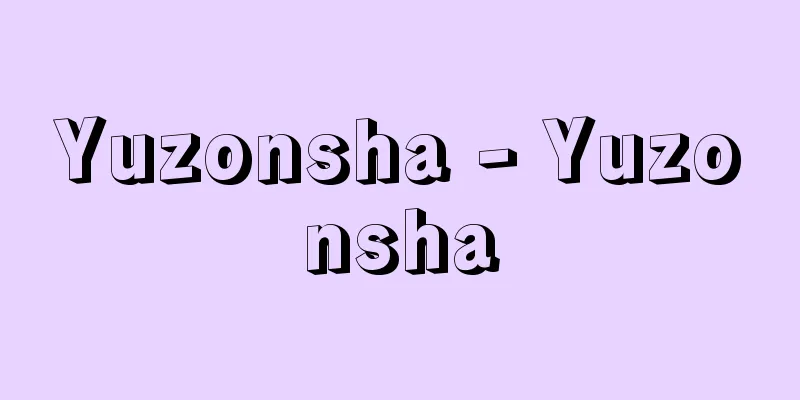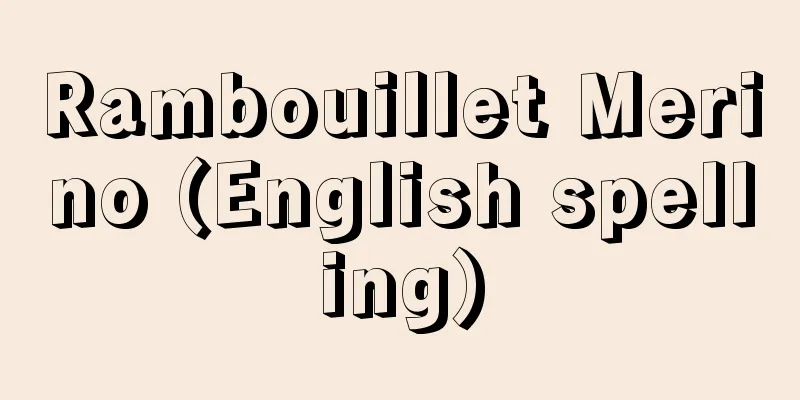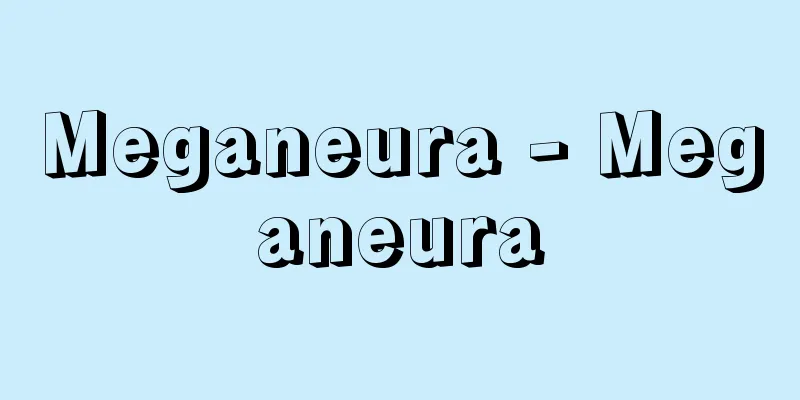Yuzonsha - Yuzonsha

|
The first national socialist right-wing group was founded in August 1919 (Taisho 8) with the goal of reforming the nation. Mitsukawa Kametaro (Mitsukawa Kametaro) consulted with Okawa Shumei (Okawa Shumei) to create a practical organization to break the status quo, and put up a signboard on the house they rented as an office, taken from a poem by Tao Yuanming, saying "Yuzonsha" (Yuzonsha), and Okawa went to Shanghai to welcome Kita Ikki, hoping to make him their leader. On January 1, 1920, Kita returned to Japan, and in addition to these three, the group included Iwata Fumio (Iwata Fumio), Shimizu Gyonosuke (Shimizu Gyonosuke), Ayakawa Takeharu (Ayakawa Takeharu), Kasaki Yoshiaki (Kasaki Yoshiaki), Yasuoka Masahiro (Yasuoka Masahiro), and Kanokogi Kazunobu (Kanokogi Kazunobu). They distributed Kita Ikki's "Outline of Principles for Reforming the Nation" as their central manual, and with the central slogan "Reforming the Japanese Empire and Liberation of the Asian Peoples," they set forth a platform that included "Building a revolutionary Japan, rational organization of the Japanese state, national liberation movement, carrying out a moral foreign policy, and linking the reform movement." In September, they published their journal "Otakebi," which began with a declaration that began with "We, the Japanese people, must be the whirlwind center of the struggle for human liberation," and influenced students and military personnel, but conflict arose between Kita and Okawa, and the group was dissolved in March 1948. Other groups that followed in the footsteps of the Yusonsha include the Taikakai, Kochisha, and Jinmu-kai, but the postwar right-wing group, the Yusonsha, was of a different nature. [Tatsuzo Ohno] “Comprehensive Study of Japanese Thought Crime Incidents” by Saburo Saito (“Thought Research Materials Special Edition” No. 53, 1939, Criminal Bureau of the Ministry of Justice)” ▽ ““Kita Kazuki, Expanded Edition” by Sogoro Tanaka (1971, Sanichi Shobo)” [Reference items] | | |Source: Shogakukan Encyclopedia Nipponica About Encyclopedia Nipponica Information | Legend |
|
1919年(大正8)8月、国家改造を目的として創立された最初の国家社会主義系右翼団体。満川亀太郎(みつかわかめたろう)が大川周明(しゅうめい)と相談して、現状打破の実践的組織をつくろうと考え、事務所として借りた家に陶淵明(とうえんめい)の詩からとった「猶存社」という表札を掲げ、北一輝(きたいっき)を指導者にしようと大川が上海(シャンハイ)まで迎えに行った。20年1月1日、北が帰国するが、この3人のほか同人に岩田富美夫(ふみお)、清水行之助(しみずぎょうのすけ)、綾川武治(あやかわたけはる)、笠木良明(かさきよしあき)、安岡正篤(まさひろ)、鹿子木員信(かのこぎかずのぶ)などがいた。北一輝の『国家改造案原理大綱』を中心操典として配布に努め、「日本帝国の改造とアジア民族の解放」を中心スローガンとし、「革命日本の建設、日本国家の合理的組織、民族解放運動、道義的対外政策の遂行、改造運動の連絡」などの綱領を掲げた。9月、機関誌『雄叫(おたけび)』を発刊、「吾々(われわれ)日本民族は人類解放戦の旋風的渦心でなければならぬ」を冒頭とする宣言を発表、学生、軍人などに影響を与えたが、北と大川の間に対立が生じ、23年3月解散した。猶存社の流れをくむものに、大化会、行地社(こうちしゃ)、神武(じんむ)会などがあるが、戦後の右翼団体、猶存社は性格の違う団体である。 [大野達三] 『斉藤三郎著『日本思想犯罪事件の綜合的研究』(『思想研究資料特輯』第53号・1939・司法省刑事局)』▽『田中惣五郎著『増補版 北一輝』(1971・三一書房)』 [参照項目] | | |出典 小学館 日本大百科全書(ニッポニカ)日本大百科全書(ニッポニカ)について 情報 | 凡例 |
>>: Yusoku pattern - Yusoku pattern
Recommend
Oonaobi no Mikoto
...In the Kojiki and one of the Nihon Shoki, this...
Old man - Okina
...In Noh, the performer in charge of the Sanbaso...
Irako Seihaku - Irako Seihaku
Poet. His real name was Teruzo. He was also known...
Hyriopsis cumingii (English spelling) Hyriopsiscumingii
…[Tadashige Nabe]. . … *Some of the terminology t...
Rebellion of the Eight Kings
A civil war occurred in the Western Jin Dynasty i...
The legend of going to heaven from Mount Koya
Written by Nyojaku of Hino Hokaiji Temple. Accordi...
Kinki
Nutrition and Function The market name is Kinki, ...
Toraku
A method of expressing cultivated land area unique...
Merienda
…All the cuisines share the common elements of ol...
Japanese wood pigeon - Karasubato (English spelling)
A bird of the family Columbiformes. Total length i...
Sula bassana (English spelling) Sulabassana
...The three species that live in temperate water...
Bunun
...In general, there are few linguistic documents...
Podgornyi, NV (English spelling) PodgornyiNV
...Policies toward the Third World became more ag...
Direct measurement
…For example, the speed of an object is calculate...
Cryptomeria
...An evergreen tall tree of the cedar family, it...









